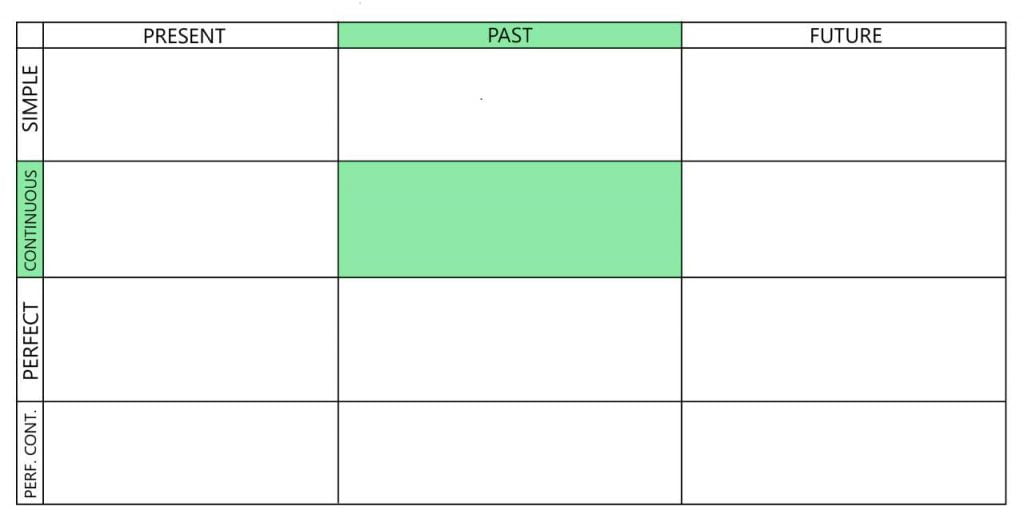In some grammar books, they also call it Present Indefinite. Basically, Present Simple and Present Indefinite are synonymous expressions. The term “indefinite,” in the name of the tense, is gradually dying out. I think it’s because it is very illogical here.
Naming convention of the English tenses
If we look at the way we name English tenses, we can notice that they consist of 2 parts: tense and aspect.
Tense
Tense shows us the period of time in terms of present, past or future – tense. The tense part of the name shows us when an action or state expressed by the verb takes place – in the present, past or future.
Present Continuous
| Tense | Aspect |
| Present | Continuous |
Aspect
The second part of the name is aspect. We have perfect and continuous aspects. I would say that simple is also an aspect because it is simply neither perfect nor continuous, it’s 0 aspect.
Some define only 2 aspects – perfect and continuous, because they think that compound verb tenses have an auxiliary verb to help form a tense. Ex: I have bought, I am buying. Here we have 2 verbs – help verb and main verb. That’s why it’s a compound tense. Compare with this example: I buy. They think that simple tenses don’t have an auxiliary verb (I buy), so this is why they are called simple, and this is why they don’t have an aspect. Check out definition of tense in Collins online dictionary.
I would say there are 3 or 4 aspects vs just 2. Simple aspect is zero aspect. I think we need to be consistent for the naming convention to be naming convention. So, if the first part is tense and the second part is aspect, then simple is aspect too. So there are 3 aspects – simple, continuous (progressive), and perfect. Perfect continuous is basically a combination of the two aspects.
Finally, speaking about the naming convention of the English tense system, please refer to this table with aspects going horizontally and tenses going vertically. As a result, we have cooked the name of the PAST CONTINUOUS TENSE.

Naming convention in English tenses
| TENSE | ASPECT |
| PRESENT, PAST, FUTURE | SIMPLE, CONTINUOUS, PERFECT, PERFECT CONTINUOUS |
| use one of the above | use one of the above |
| examples of verb tense names | |
| Present + | Simple = Present Simple |
| Past + | Perfect = Past Perfect |
Some would say there is no future tense. Because the second part in the name of a future tense is MOOD (not ASPECT). Shall and will are modal verbs displaying a different grammatical function – expression of intention or obligation.
Well, to me as long as there is an auxiliary verb, assisting, giving support to form a sentence, saying that an action will take place in the future, the future tenses exist. To me, it doesn’t matter if this auxiliary verb has a shade of modality or not. It is still an auxiliary verb.
I will do it, even if I don’t want to.
Consistency in learning English is more important than the long going debate whether a language like English has a future tense at all or if simple tenses have aspect at all. I have conducted some research, and I would say that future tenses, and aspect in simple line of tenses exist. Otherwise, Present Simple would sound like Present, Past Simple like Past and Future Simple like Future.
Simply:
Present Simple is called Simple because it’s not Perfect or Continuous or both (Perfect Continuous).
Now that we know why Present Simple has this name, we can research why some grammar books call it Present Indefinite.
More on Present Simple:
